Three Statement Model Overview
Summary Text
The objective of the first video in this series is to explain and briefly walk through the process of building a fully integrated three-statement model. Initially a brief outline is provided detailing the sequence in which this model will be built. Keeping this sequence in mind as you build the model provides a good reference for progress made.
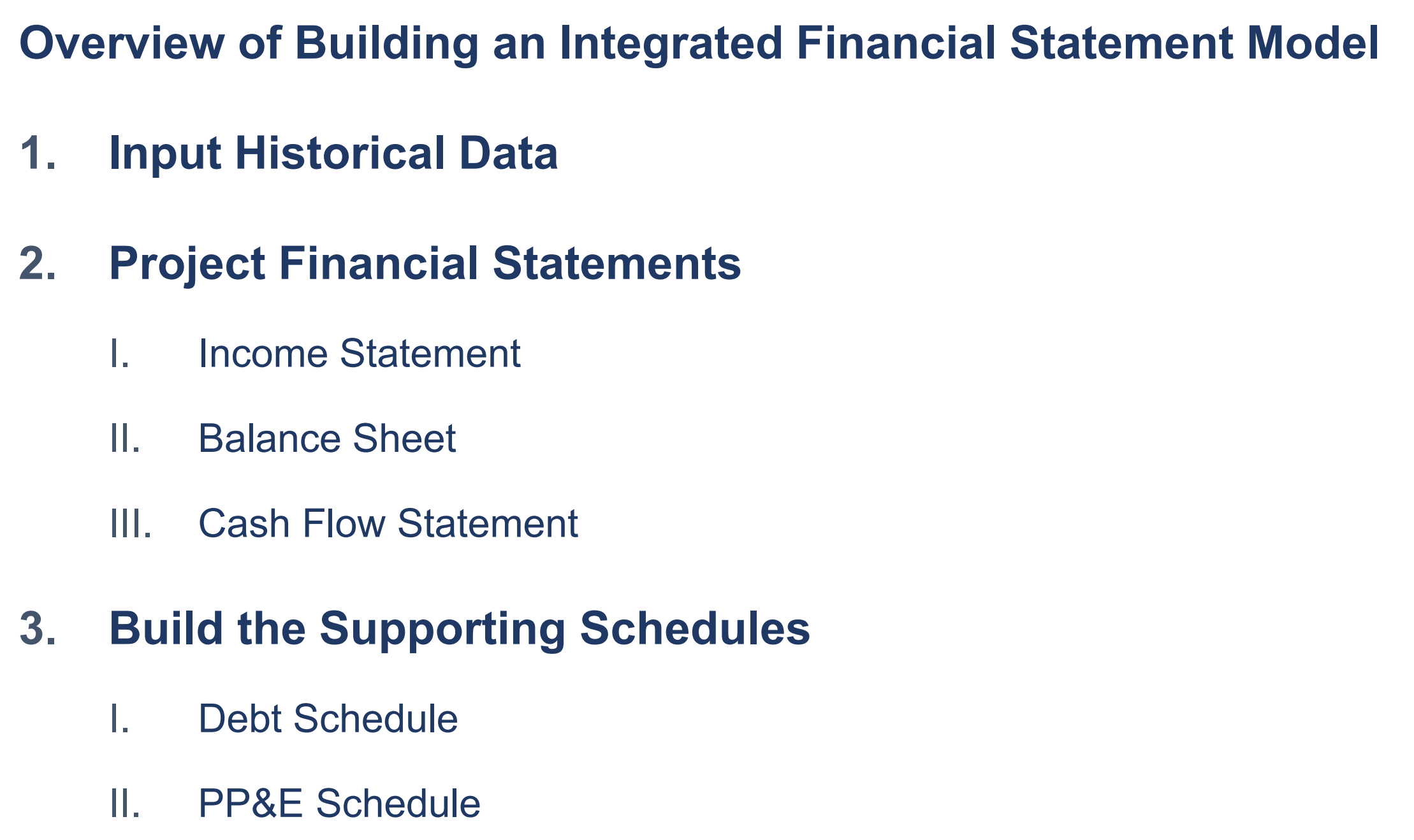
Most of the detail in what might otherwise appear to be a complex three-statement financial model is simple math (not always, but frequently). I have found that if the principle relationships linking the three primary financial statements are well known, it makes understanding the rest of the model an easier exercise. With that in mind let's walk through some of the key relationships between the three primary financial statements.
Since the model-building process starts with the income statement, we can begin by exploring the relationship between the income statement and the balance sheet.
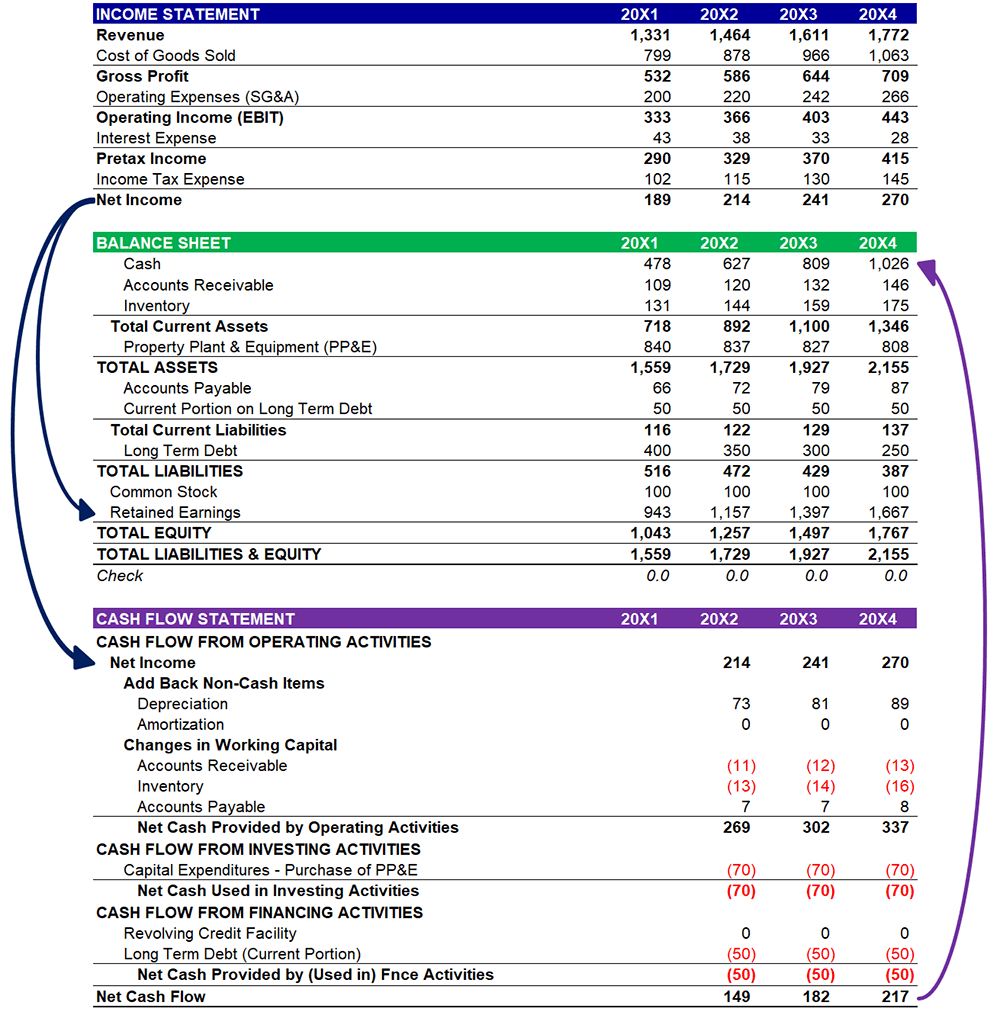
INCOME STATEMENT (blue arrows above):
- Net income on the income statement grows retained earnings on the balance sheet.
- The cash flow statement starts with net income.
BALANCE SHEET (purple arrow above):
- Cash on the balance sheet links to cash on the cash flow statement.
- Links between the income statement, balance sheet and cash flow statement.
CASH FLOW STATEMENT:
- Non-cash items from the income statement are added back to net income at the top of the cash flow statement (blue arrow below).
- Changes in working capital accounts from the balance sheet are recorded on the cash flow statement (green arrows below).
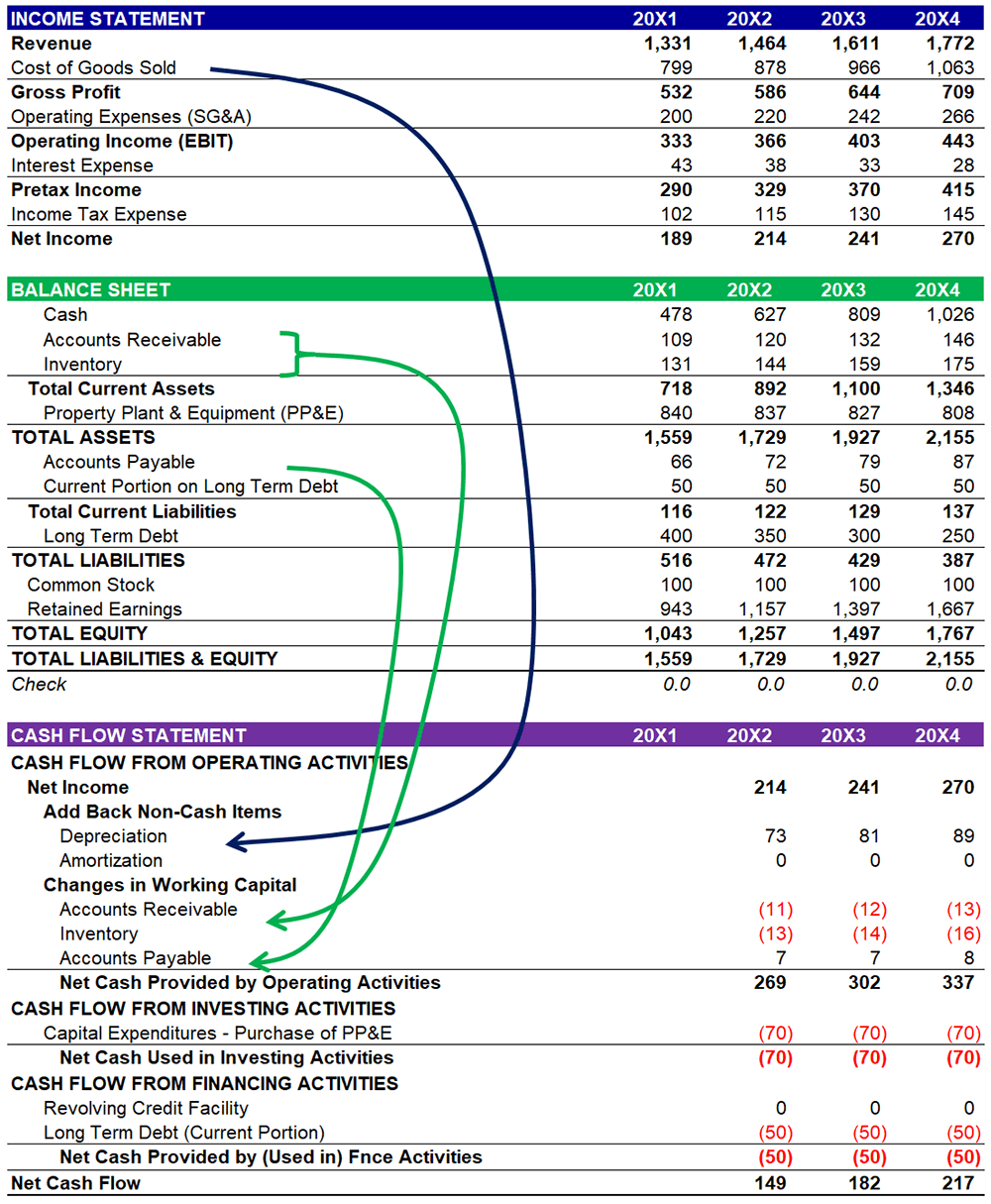
DEBT SCHEDULE (orange arrows):
The debt schedule links to the income statement, balance sheet and cash flow statement.
- Total interest expense links back to the income statement.
- Debt balances link back to the balance sheet.
- Repayment of debt appears on the cash flow statement under cash flow from financing activities.
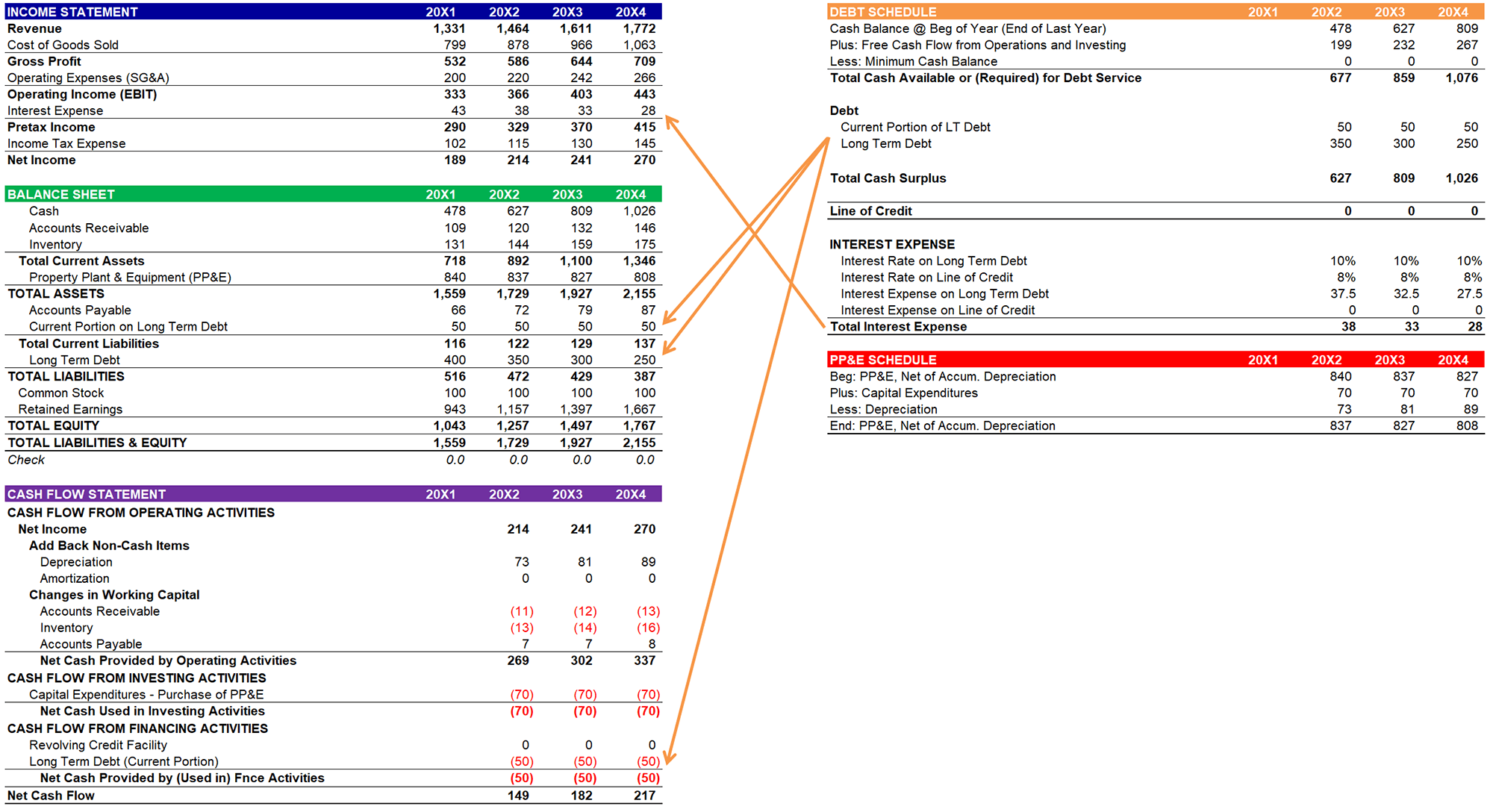
PP&E SCHEDULE (red arrows):
The PP&E schedule links to the balance sheet and cash flow statement.
- PP&E balance links back to the balance sheet.
- Depreciation links to the cash flow statement, where it is added back as a non-cash item.
- Capital expenditures appear on the cash flow statement under cash flow from investing activities.
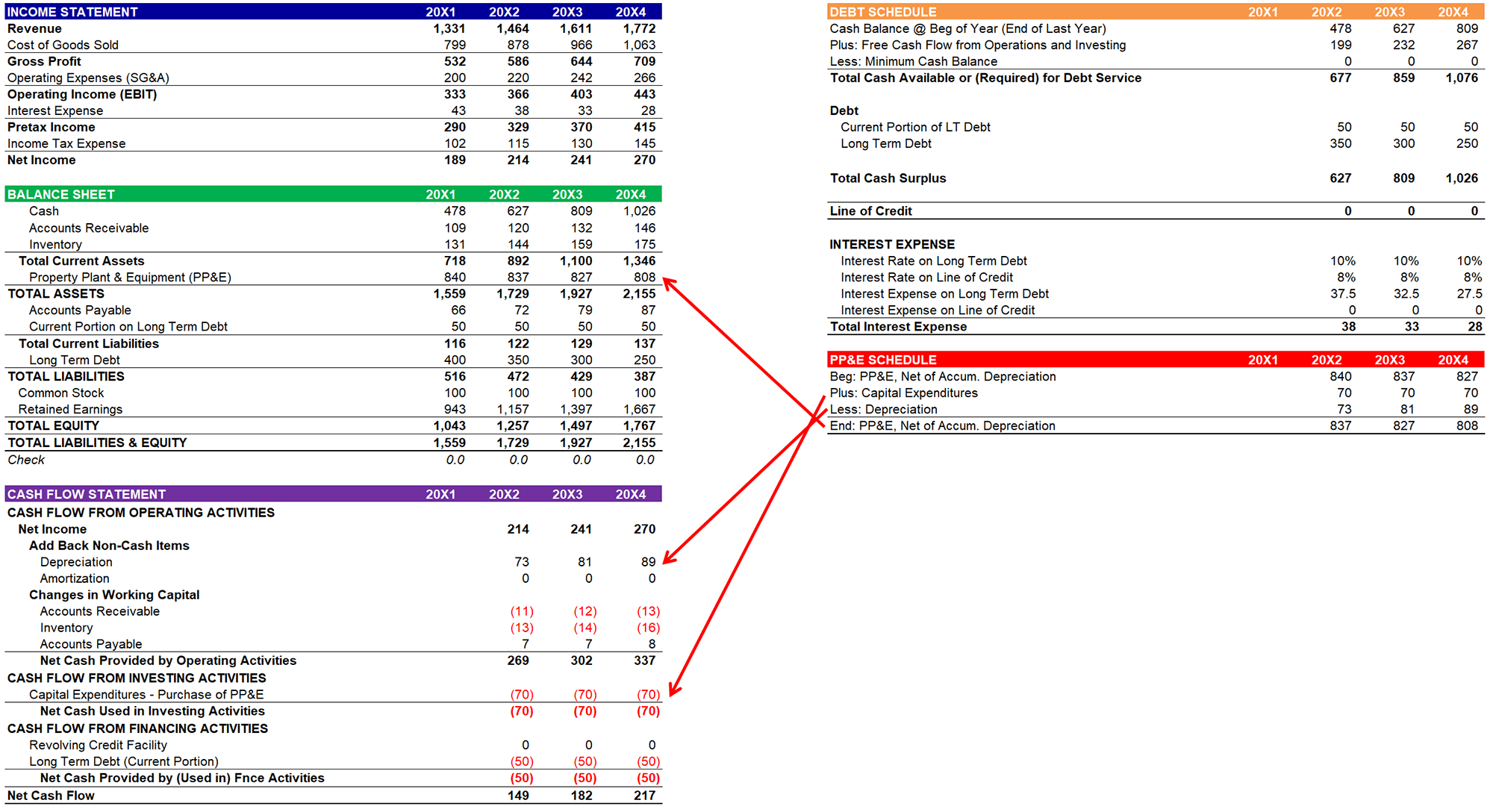
POSTED BYASM+ TeamTags:IFS, Overview
